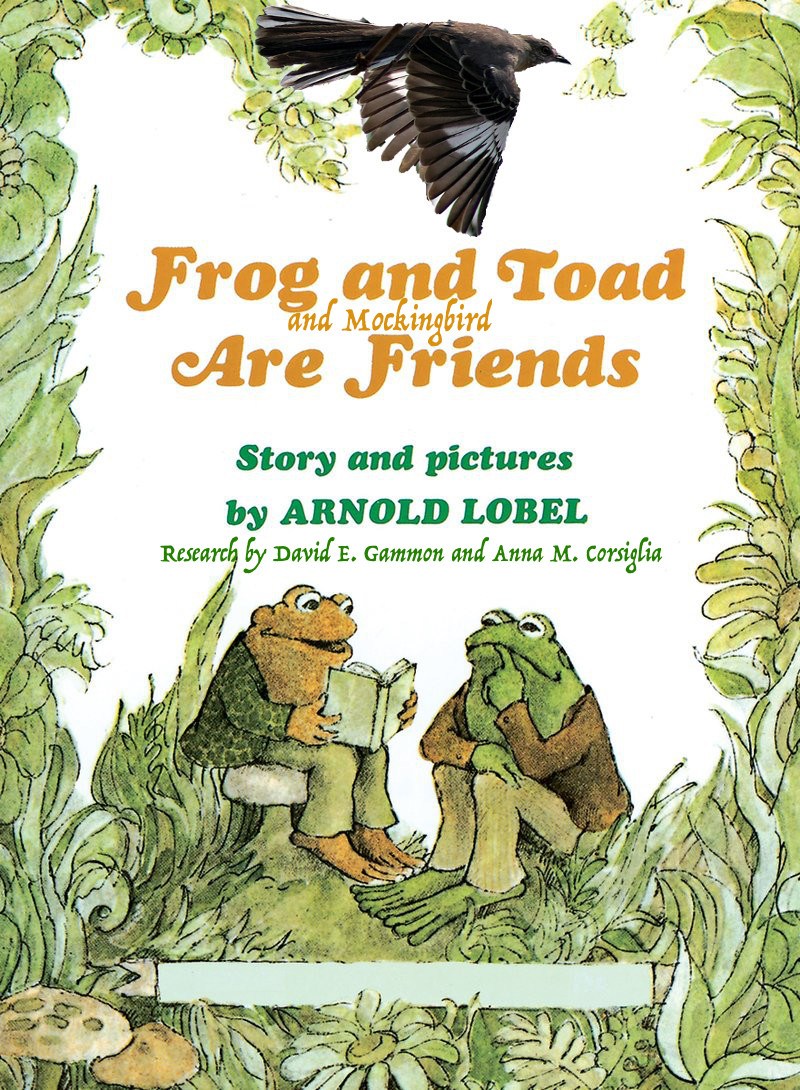
Mockingbirds have the extraordinary ability of imitating non-mockingbird and even non-bird animals. A great deal of research has been done on birds’ mimicry of other birds, but examples of birds imitating non-bird models are very limited; included among this small group of bird and non-bird pairs are the fork-tailed drongos and meerkats and European tits and snakes. Superb lyrebirds even go beyond the animal kingdom with their imitations of camera shutters and chainsaws. To continue exploring this niche mimicry relationship, David Gammon and Anna Corsiglia investigated mockingbirds’ mimicry of frogs and toads. Of the 71 frog and toad species within the habitats of the tests, the researchers predicted 39 species might be imitated because the dominant frequency of their calls was similar enough to that of the mockingbirds.
Northern Mockingbird. Wiki Commons.
Gammon and Corsiglia used archived recordings of the songs of the northern mockingbird, a species well-known for its mimetic ability; about half of its songs are mimetic. From these recordings, the researchers found that not only do northern mockingbirds successfully mimic numerous species of frogs and toads, they do so across North America: they recorded in 370 northern mockingbirds in 106 counties throughout twenty-two states and Baja California. Of these tests, there were 24 instances where the mockingbirds mimicked 12 different species of frogs or toads.
Gammon and Corsiglia’s predictions were significantly accurate: 11 of the 12 imitated frog and toad species came from their original list of 39 possible species. For the one species not on the original list, the gopher frog, the mockingbirds left out the dominant part of the frog’s call that was outside of their singing range and instead sang the upper part of the frog’s call. This pattern continued with other mimetic songs, where the mockingbirds left out the parts of the frog or toad’s calls that they couldn’t sing—much like singing along to the parts of a song you can physically hit with your voice range. Another way the birds adjusted their mimetic calls to account for their own vocal ability was to shorten them, especially with long toad calls.

Dusky Gopher Frog. Wiki Commons.
From these findings, it’s clear that mockingbirds mimic frogs and toads throughout the southern two thirds of North America. While Gammon and Corsiglia couldn’t directly address the following due to their data coming exclusively from archived recordings, on a broader scale their work adds to the discussion of what kind of non-bird models are selected to be mimicked, the ecological relationship between mimics and their non-bird subjects, and how bodily constraints limit what models birds can mimic.
References
Gammon, D. E., & Corsiglia, A. M. (2019). Mockingbirds imitate frogs and toads across North America. Behavioural Processes, 169, 103982. doi: 10.1016/j.beproc.2019.103982
